English Garden Tips: Easy Steps for a Blooming Sanctuary
Creating an English garden can transform your outdoor space into a charming, peaceful retreat. These gardens are known for their beautiful mix of flowers, greenery, and small decorative touches that create a welcoming and timeless atmosphere. How can you achieve this enchanting look in your own backyard?

You will learn easy tips and ideas to help you design an English garden. Whether you have a large yard or a small space, these guidelines will make your garden look lush and inviting. Your garden can become a place where you love to spend time, surrounded by nature’s beauty.
1) Choose Native Plants

Native plants are a great choice for your English garden. They are adapted to the local climate, making them easier to maintain.
Start with shrubs like spicebush or chokeberry. They provide structure and year-round interest.
Native plants also attract local wildlife. This includes insects, birds, and other creatures that rely on them for food.
Avoid using chemicals. Native plants can thrive naturally without them. This helps create a healthier environment for everyone.
Find plants suited to your region. A native plant from one area might not thrive in another with a different climate.
2) Incorporate a water feature
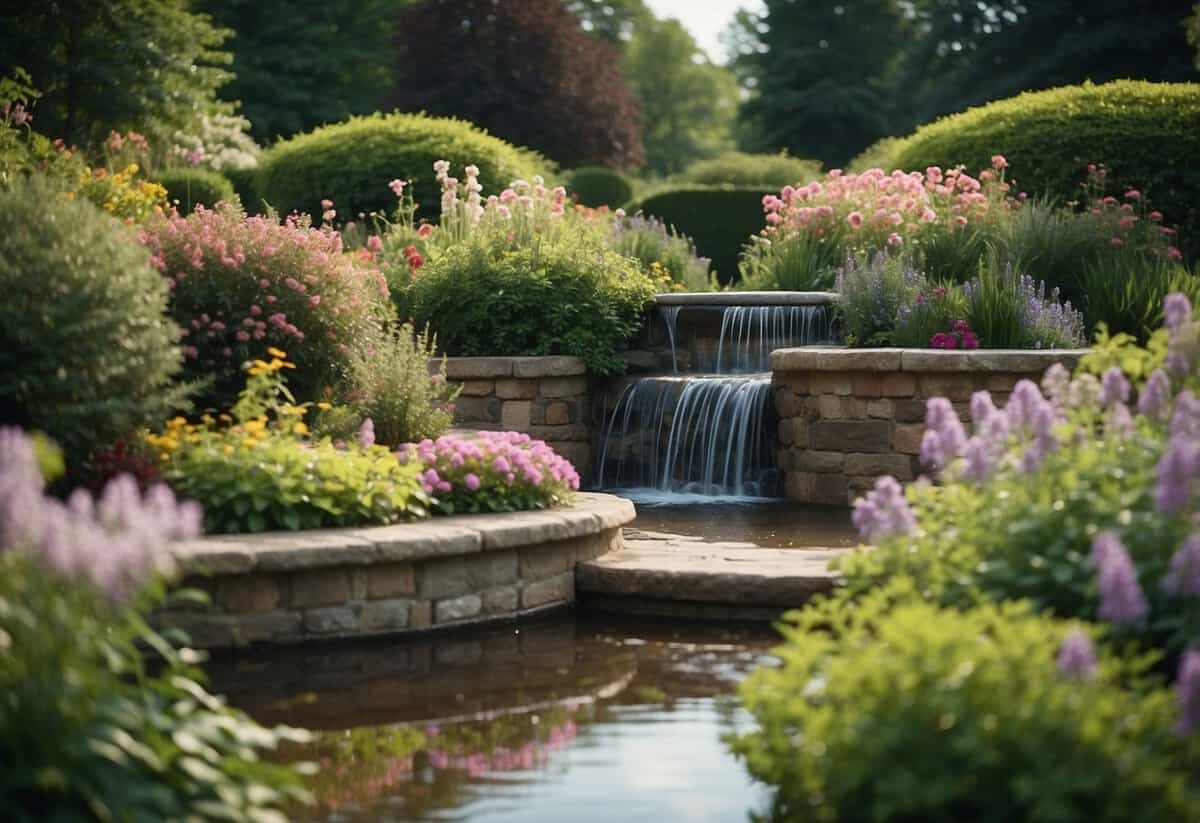
Adding a water feature to your English garden brings a touch of tranquility and beauty. It could be a small pond, a bubbling fountain, or a birdbath.
Position your water feature where it can be seen from your house. This way, you can enjoy it even when you’re indoors. Ensure the water stays clean by using a pump.
Using a watertight pot as a mini-pond is a simple and effective method (The English Garden). Integrating aquatic plants can help keep the water clear and add natural beauty.
3) Select a variety of flowers
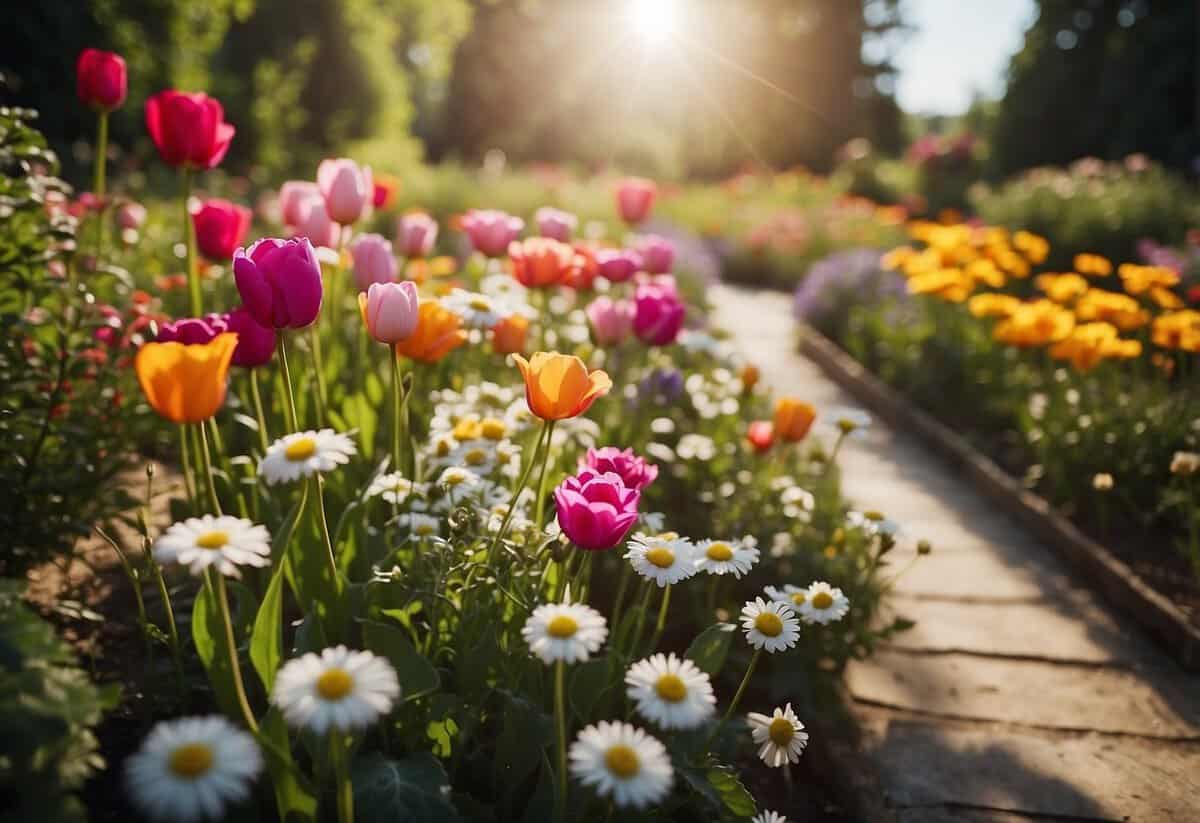
Choosing a mix of flowers can make your English garden look colorful and inviting. Consider planting English roses for their lovely scent and beautiful blooms.
Add hydrangeas for bursts of color. Don’t forget classics like daffodils and lavender to create a charming and balanced garden.
4) Use Natural Materials

Using natural materials in your English garden adds a timeless charm. Consider paths made from stone, brick, or gravel. These materials blend seamlessly with the garden’s plants and flowers.
Wooden benches and fences can also enhance the garden’s rustic appeal. They age beautifully and fit well with the natural surroundings.
Incorporate stone ornaments like bird baths or sundials. These elements bring character to the space without overpowering it.
5) Group plants by needs
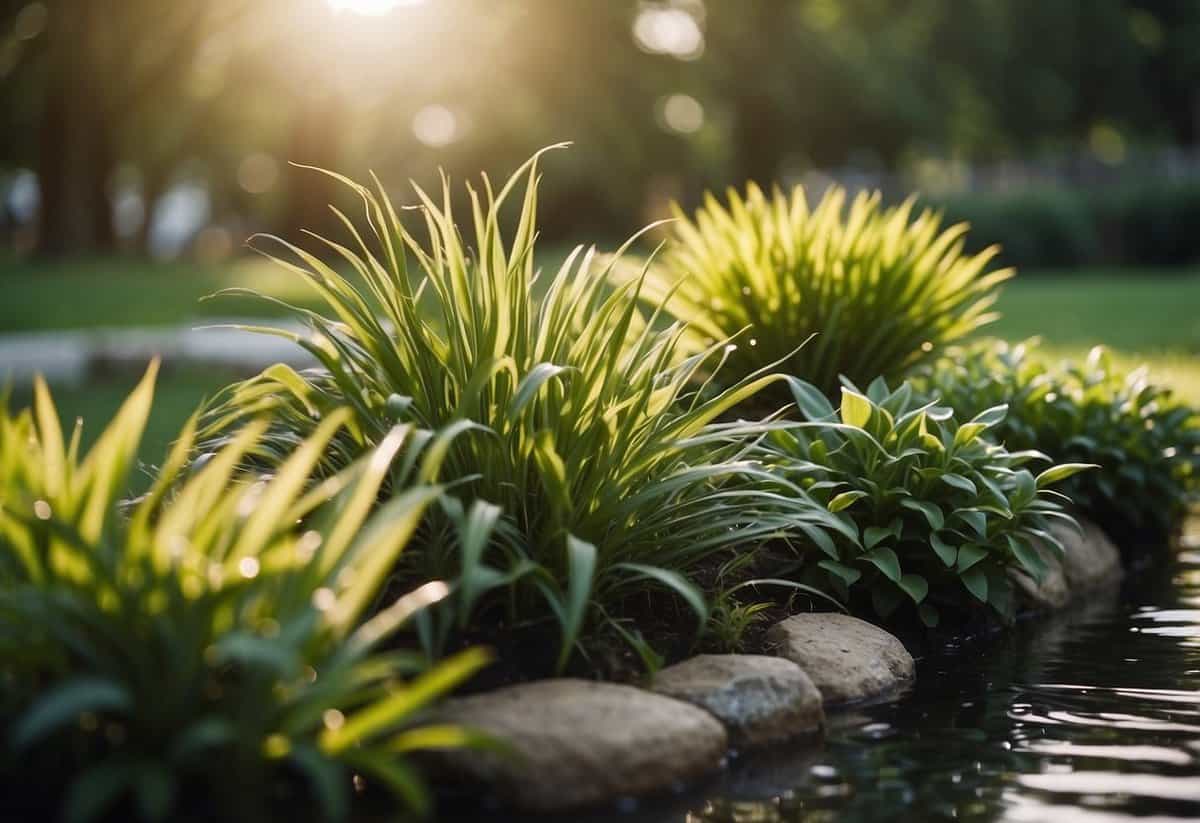
To help your English garden thrive, group plants with similar needs together. This way, they get the right amount of water, sunlight, and soil conditions.
For instance, place English Lavender with other sun-loving plants.
Similarly, keep shade-loving plants like Japanese Anemone together.
By doing this, you ensure each plant gets what it needs without added stress. Your garden will look healthier and more beautiful as a result.
6) Create garden paths

Garden paths add both beauty and function. They guide you through your garden and highlight different areas.
You might consider using materials like stone or gravel. These can create a charming and traditional look.
For a twist, think about setting walkways at angles or varying levels. This adds interest and makes your garden unique. You can check out some garden path ideas for inspiration.
7) Add Seating Areas

Adding seating areas to your English garden invites relaxation and enjoyment. Cozy seating nooks can turn your garden into a peaceful retreat.
Consider placing stone benches among your neatly clipped hedges. For a touch of elegance, a gazebo makes a charming focal point. Wooden benches or wrought iron chairs can also add character.
Create a welcoming space with a few carefully chosen seating options. Nestle them among blooming flowers for a nature-inspired escape.
8) Plant for Year-Round Interest

Creating a garden that looks good all year can be exciting and rewarding. Start with shrubs and trees that shine in different seasons. For instance, Viburnum opulus has beautiful white flowers in spring and red berries in autumn.
Consider evergreen shrubs like camellias, which offer vibrant winter flowers. Adding perennial plants ensures your garden remains colorful and interesting, no matter the time of year. Delphiniums, with their bright flowers, can add summer drama.
Mix these with striking options like Chinese witch hazel and star jasmine, which have different seasonal highlights. ف
9) Include a Vegetable Patch
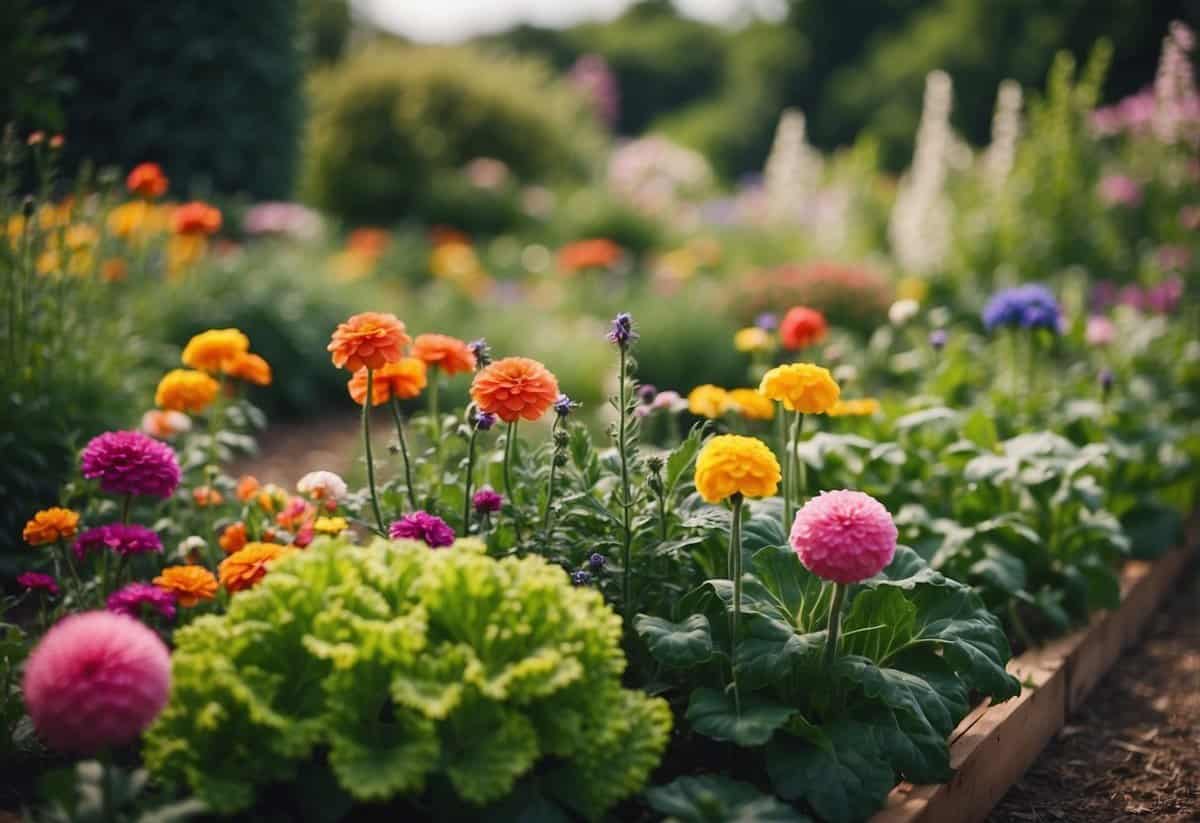
Start by choosing a sunny spot. Vegetables need plenty of sunlight to grow well.
Prepare the ground by removing grass and weeds. Then, test your soil to see if it needs any improvements in texture, drainage, or nutrients.
Next, decide on your garden structure. You can choose between raised beds, rows, or blocks. Keep it simple, especially if you’re a beginner.
Focus on planting a few types of vegetables to avoid making things too complex. For example, carrots, lettuce, and tomatoes are great choices for a small patch.
Aim to make your patch manageable in size. A 10×10 feet area is a good start. This helps you maintain it easily without feeling overwhelmed.
10) Create wildlife habitats

You can transform your garden into a vibrant wildlife habitat with a few simple steps. Start by planting native shrubs like holly or guelder rose to offer shelter and nesting areas. Climbing plants are great, too, as they provide cover for birds and insects.
Consider growing butterfly-friendly plants. Butterflies and moths are attracted to nectar-rich flowers. Brimstone butterflies, for example, depend on specific plants.
Don’t forget about small critters. A rock pile or log stack can become a home for many insects and small animals. Your garden can become a haven for wildlife, bringing nature closer to you!
Planning Your English Garden

Creating an English garden involves choosing beautiful plants, designing a cozy layout, and considering seasonal changes. This guide will help you start your journey.
Choosing the Right Plants
Start with classic choices like roses, lavender, and boxwood. These plants give your garden a traditional feel.
Add variety with colorful annuals like geraniums and perennials such as catmint for both structure and charm. Consider planting evergreens like inkberry holly to keep your garden looking lively all year.
Think about height and color. Use taller plants at the back and shorter ones in the front. Remember, a mix of textures and shapes will make your garden more appealing.
Design Principles
Pathways are essential in English gardens. Use materials like brick or stone pavers for a classic look. For an eco-friendly option, go with flagstones or crushed gravel.
Design your garden in sections or “rooms.” Use low hedges or shrubs to create different areas. This way, you can have a cozy spot for reading and another for entertaining guests.
Keep hedges well-trimmed to maintain a neat appearance. Large, well-trimmed bushes can also act as walls and divide spaces.
Seasonal Considerations
Plan for all four seasons to keep your garden attractive year-round. Plant bulbs like tulips and daffodils for spring. Summers will be colorful with roses, lavender, and annuals.
Include shrubs and trees for fall interest. They provide lovely colors and textures that change with the season. In winter, evergreen shrubs like boxwoods and hollies will keep your garden looking vibrant.
Think about planting times and blooming periods. This way, you can ensure something is always in bloom, making your garden a cheerful place no matter the time of year.
Maintaining Your English Garden
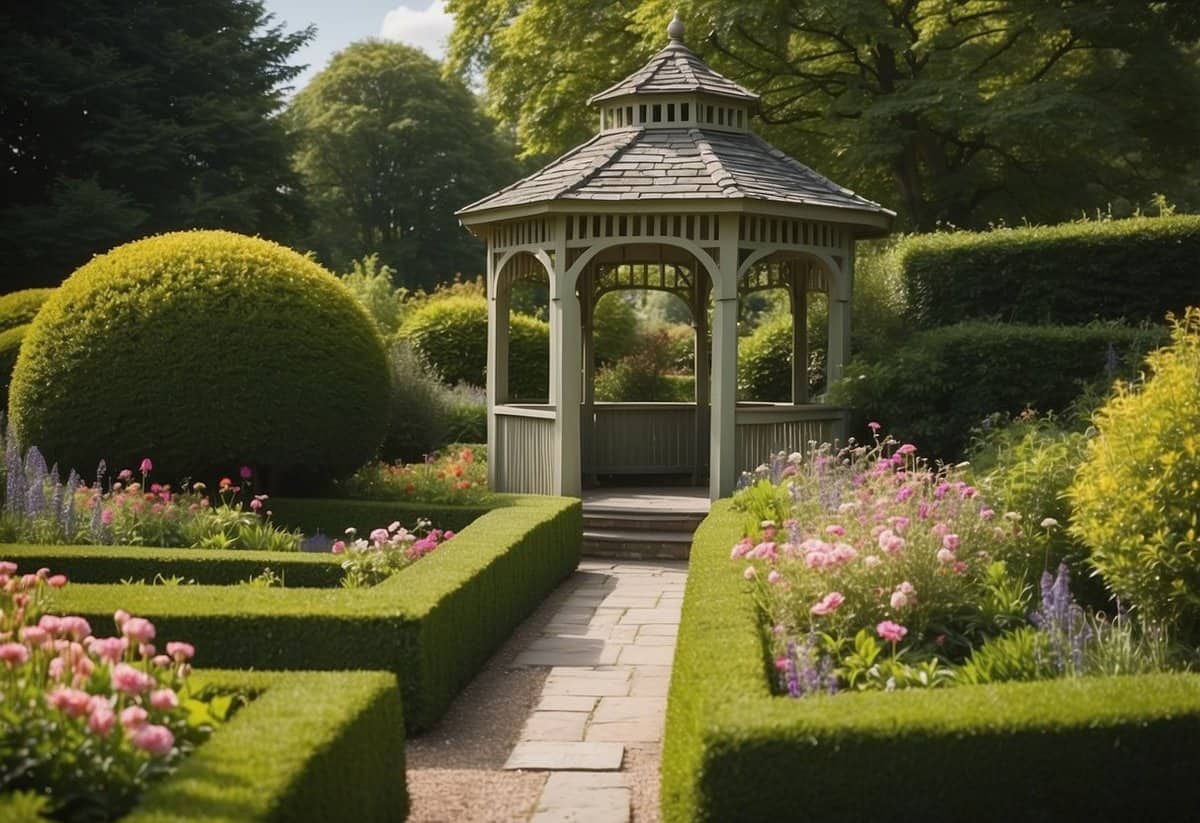
Maintaining an English garden involves regular care such as proper pruning, consistent watering, and effective pest control. These practices ensure your garden stays healthy and beautiful year-round.
Pruning and Trimming Techniques
Proper pruning helps keep plants healthy and shapely. Begin by removing any dead or diseased branches. Cut back overgrown sections to encourage new growth. Hedge trimmers are useful for maintaining the classic look of hedges in English gardens.
For flowering plants, trim spent blooms to promote more flowers. For shrubs, prune at the right time—typically after they have finished flowering. Always use clean, sharp tools to make precise cuts and avoid damaging the plants.
Watering Schedules
Watering your garden correctly is essential. Most plants in an English garden prefer moist soil, so water regularly. Aim to water early in the morning to reduce evaporation. Focus on watering the base of plants rather than overhead.
In dry spells, increase watering frequency but avoid waterlogging. For a detailed watering plan, check resources on specific plants in your garden. Automatic sprinklers or drip irrigation systems can help maintain consistent watering levels.
Pest and Disease Management
Pests and diseases can harm your garden if not controlled. Monitor your plants closely for signs of trouble, such as holes in leaves, discoloration, or wilting. If you spot an issue, identify the pest or disease first and then choose an appropriate remedy.
Using natural pest deterrents, like neem oil or insecticidal soaps, can effectively manage many issues. Encourage beneficial insects, such as ladybugs, that prey on harmful pests. Keep your garden clean and free of fallen leaves or debris where pests might thrive.







